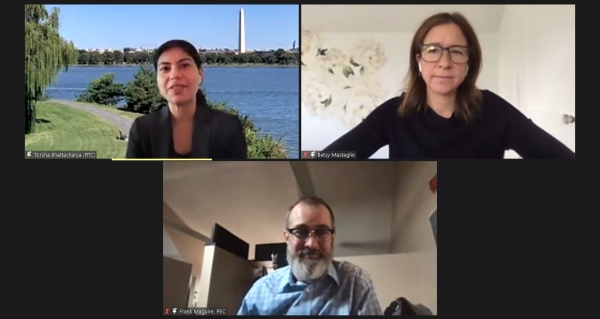MODAL SHIFT: How Trail Use is Gaining Momentum During the Pandemic

On Friday, April 30th, this virtual lunchtime event was moderated by Betsy Mastaglio, Manager of the Office of Transit, Bicycle, and Pedestrian Planning at the Delaware Valley Regional Planning Commission. The panelists included: Torsha Bhattacharya, PhD, Director of Research at the Rails-to-Trails Conservancy; Frank Maguire, Program Director, Trails and Outdoor Recreation at the Pennsylvania Environmental Council; and Jeannette Brugger, AICP, Bicycle & Pedestrian Coordinator for the City of Philadelphia.
The event began with an ice breaker question about each speaker’s favorite trails – Cynwyd Heritage Trail, Mount Vernon Trial in DC, the Great Allegheny Passage, and Forbidden Drive – and then discussion shifted to changes in bicycle and pedestrian behavior during the pandemic. Speaking at the federal, state, and regional levels, our panel noted that we have seen both a significant decrease in the use of trails for commuting and an overwhelming increase in trail use for recreational purposes. In the past, trail use often peaked before and after work, but trail use has evened out over the course of the day.
With an overall dramatic increase in trail usage during the pandemic, the panelists were all optimistic that the growth and enthusiasm for trails will persist. Speakers noted that lower vehicle volumes have led to less traffic during the pandemic, but also more traffic accidents. Trail usage can be promoted by encouraging connections to trail heads, closing gaps in the system - especially in underserved communities, providing easy access, and taking opportunities to incorporate safety for bike riders and pedestrians into other infrastructure projects, like roadway repaving.
Education and outreach are critical too! The panel discussed the importance of our communities and leaders thinking of bicycle and pedestrian infrastructure as a “network” rather than an “amenity.” Planning for and funding high-quality connections, shaded places to sit, safe railroad crossings, and consistency in terms of width and signage will encourage trail use into the future.